Sensing Images for Assessing the Minimum Ecological Flux by Automatically Extracting River Surface Width
Abstract
1. Introduction
2. Materials and Methods
2.1. Overview of Study Area
2.2. Data Source
2.2.1. Measured Data
2.2.2. Remote Sensing Images
2.3. Remote Sensing Extraction Method of River Water Surface Width
2.3.1. Definition of River Surface width
2.3.2. Automatic Extraction of River Surface Width
2.4. Minimum Ecological Flux Remote Sensing Supervision Method
- Calculation of the minimum ecological flux according to the minimum ecological flux threshold. The Tennant method was used to select 10% of the historical flow data as the threshold [27]. The Tennant method is the only method that can be used to determine the minimum ecological flow based on the natural hydrological rhythm. It is also one of the primary methods used by the Chinese government to evaluate ecological flow [28].
- Calculation of the minimum ecological water level based on the flow and water level relationship and the minimum ecological flux fitted by the measured data.
- Determination of the minimum river surface width based on the minimum ecological water level and the cross-sectional water level map.
2.5. Accuracy Evaluation
3. Results
3.1. Results of Remote Sensing Extraction of River Water Width
3.2. Supervision Result of Ecological Flow Guarantee
3.3. Accuracy Assessment
4. Discussion
4.1. Comparison of Different Water Index Calculations
4.2. Comparison of Methods for Automatically Extracting River Water Surface Width
4.3. Influence of Glitter, Ice, Shadow, and Clouds on Width of River Water
5. Conclusions
Author Contributions
Funding
Conflicts of Interest
References
- Vörösmarty, C.J.; McIntyre, P.B.; Gessner, M.O.; Dudgeon, D.; Prusevich, A.; Green, P.; Glidden, S.; Bunn, S.E.; Sullivan, C.A.; Liermann, C.R.; et al. Global threats to human water security and river biodiversity. Nature 2010, 467, 555–561. [Google Scholar] [CrossRef] [PubMed]
- Jain, S.K. Assessment of environmental flow requirements. Hydrol. Process. 2012, 26, 3472–3476. [Google Scholar] [CrossRef]
- Yi, Y.; Zhang, S. Review of aquatic species habitat simulation method and modelling. Sci. Sin. Technol. 2019, 49, 363–377. [Google Scholar] [CrossRef]
- Hao, F.; Fengling, Y. Calculation of minimum discharge based on eco-hydraulics method. J. China Hydrol. 2016, 36, 40–43. [Google Scholar]
- Bjerklie, D.M.; Birkett, C.M.; Jones, J.W.; Carabajal, C.; Rover, J.A.; Fulton, J.W.; Garambois, P.A. Satellite remote sensing estimation of river discharge: Application to the Yukon River Alaska. J. Hydrol. 2018, 561, 1000–1018. [Google Scholar] [CrossRef]
- Zhao, C.; Yang, S.; Liu, J.; Liu, C.; Hao, F.; Wang, Z.; Zhang, H.; Song, J.; Mitrovic, S.M.; Lim, R.P. Linking fish tolerance to water quality criteria for the assessment of environmental flows: A practical method for streamflow regulation and pollution control. Water Res. 2018, 141, 96–108. [Google Scholar] [CrossRef]
- Pavelsky, T.M.; Smith, L.C. RivWidth: A software tool for the calculation of river widths from remotely sensed imagery. IEEE Geosci. Remote Sens. Lett. 2008, 5, 70–73. [Google Scholar] [CrossRef]
- Dey, A.; Bhattacharya, R.K. Monitoring of river center line and width—A study on river Brahmaputra. J. Indian Soc. Remote 2014, 42, 475–482. [Google Scholar] [CrossRef]
- Li, H. Research and Establishment of the Yangtze River Remote Sensing Monitoring System Based on Components—Taking the Application of Remote Sensing Monitoring in the Jiangsu Section of the Yangtze River as an Example. Ph.D. Thesis, Nanjing Normal University, Nanjing, China, 2006. [Google Scholar]
- Sun, W.; Ishidaira, H.; Bastola, S.; Yu, J. Estimating daily time series of streamflow using hydrological model calibrated based on satellite observations of river water surface width: Toward real world applications. Environ. Res. 2015, 139, 36–45. [Google Scholar] [CrossRef]
- Smith, L.C.; Isacks, B.L.; Forster, R.R.; Bloom, A.L.; Preuss, I. Estimation of discharge from braided glacial rivers using ERS 1 synthetic aperture radar: First results. Water Resour. Res. 1995, 31, 1325–1329. [Google Scholar] [CrossRef]
- Brakenridge, G.R.; Nghiem, S.V.; Anderson, E.; Mic, R. Orbital microwave measurement of river discharge and ice status. Water Resour. Res. 2007, 43, W04405. [Google Scholar] [CrossRef]
- Brakenridge, G.R.; Knox, J.C.; Paylor, E.D.; Magilligan, F.J. Radar remote sensing aids study of the great flood of 1993. Eos Trans. AGU 1994, 75, 521–527. [Google Scholar] [CrossRef]
- Smith, L.C. Satellite remote sensing of river inundation area, stage, and discharge: A review. Hydrol. Process. 1997, 11, 1427–1439. [Google Scholar] [CrossRef]
- Huang, Q.; Long, D.; Du, M.; Zeng, C.; Qiao, G.; Li, X.; Hou, A.; Hong, Y. Discharge estimation in high-mountain regions with improved methods using multisource remote sensing: A case study of the Upper Brahmaputra River. Remote Sens. Environ. 2018, 219, 115–134. [Google Scholar] [CrossRef]
- Sun, W.; Fan, J.; Wang, G.; Ishidaira, H.; Bastola, S.; Yu, J.; Fu, Y.H.; Kiem, A.S.; Zuo, D.; Xu, Z. Calibrating a hydrological model in a regional river of the Qinghai–Tibet Plateau using river water width determined from high spatial resolution satellite images. Remote Sens. Environ. 2018, 214, 100–114. [Google Scholar] [CrossRef]
- Li, L.; Jin, W.; Wang, B.; Xiang, Z.; Yin, X.; Xu, Z.; Zhang, Y. Relationship between land use types within riparian zones and community structure of diatom in Taizi River, China. Res. Environ. Sci. 2015, 28, 1662–1669. [Google Scholar] [CrossRef]
- Ning, Q. On the classification and causes of formation of different channel patterns. Acta Geol. Sin. 1985, 1, 1–10. [Google Scholar] [CrossRef]
- Li, G.Q.; Zhang, S.J.; Peng, W.Q.; Tan, H.W. The subdividing for instream flow calculation and the calculating of instream flow in the Taizi River Basin. J. China Inst. Water Resour. Hydropower Res. 2011, 1, 2. [Google Scholar]
- Wang, R.; Zheng, C. Analysis on the flow meter of Tangmazai Hydrologic Station. Mod. Agric. Sci. Technol. 2010, 227. [Google Scholar]
- Zhang, Y.-S.; Xie, Y.-L. Estimation of vegetation water content of NDVI and LSWI in MODIS image. Geogr. Sci. 2008, 28, 72–76. [Google Scholar]
- Xu, H.Q. Modification of normalised difference water index (ND-WI) to enhance open water features in remotely sensed imagery. Int. J. Remote Sens. 2006, 27, 3025–3033. [Google Scholar] [CrossRef]
- McFeeters, S.K. The use of the Normalized Difference Water Index (NDWI) in the delineation of open water features. Int. J. Remote Sens. 1996, 17, 1425–1432. [Google Scholar] [CrossRef]
- Shen, H. ENVI Remote Sensing Image Processing Method; Wuhan University Press: Wuhan, China, 2009. [Google Scholar]
- Zhang, F.; Li, J.; Zhang, B.; Shen, Q.; Ye, H.; Wang, S.; Lu, Z. A simple automated dynamic threshold extraction method for the classification of large water bodies from Landsat-8 OLI water index images. Int. J. Remote Sens. 2018, 39, 3429–3451. [Google Scholar] [CrossRef]
- Deng, S. ENVI Remote Sensing Image Processing Method; Higher Education Press: Beijing, China, 2014. [Google Scholar]
- Xu, Z.; Wu, W.; Yu, S. Ecological base flow: Progress and challenge. J. Hydraul. Eng. 2016, 35, 1–11. [Google Scholar] [CrossRef]
- Summary of Technical Policy Seminar on Water Environment and Aquatic Ecological Protection of Hydropower and Water Conservancy Construction Projects. State Environmental Protection Administration, 2006. No. 11. Available online: http://bbs.gohoedu.com/guo813081p1p1.html (accessed on 12 December 2016).
- Notice on Issuing the Water Pollution Prevention and Control Plan for Key River Basins (2016–2020). State Environmental Protection Administration, 2017; No. 142. Available online: http://www.mee.gov.cn/gkml/hbb/bwj/201710/t20171027_424176.htm. (accessed on 12 October 2017).
- Notice on Strengthening the Ecological Flow Supervision of Small Hydropower Stations in the Yangtze River Economic Zone. Agriculture, Water and Hydropower Bureau, 2019; No. 241. Available online: http://www.mwr.gov.cn/zwgk/zfxxgkml/201909/t20190902_1362055.html. (accessed on 21 August 2019).
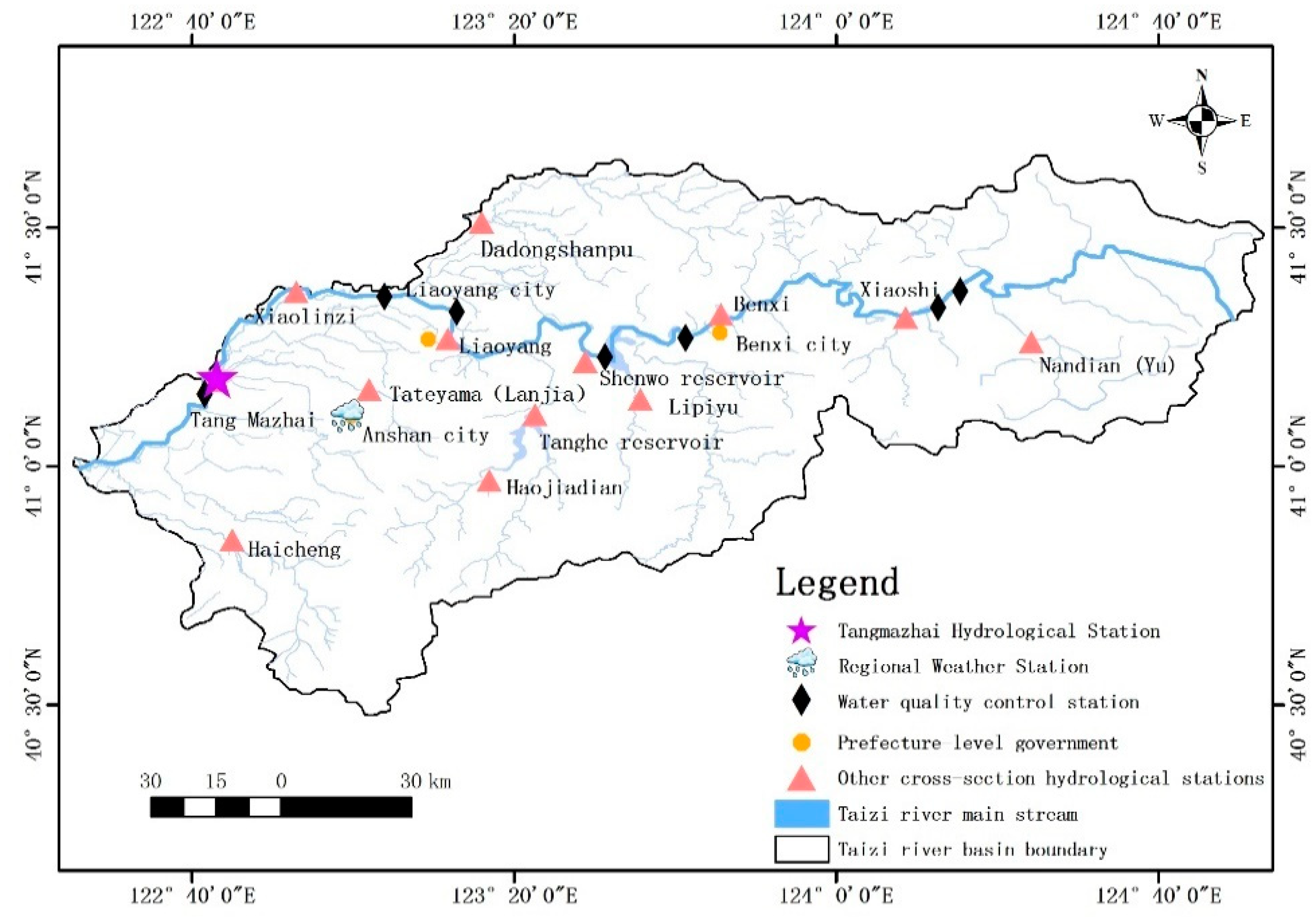

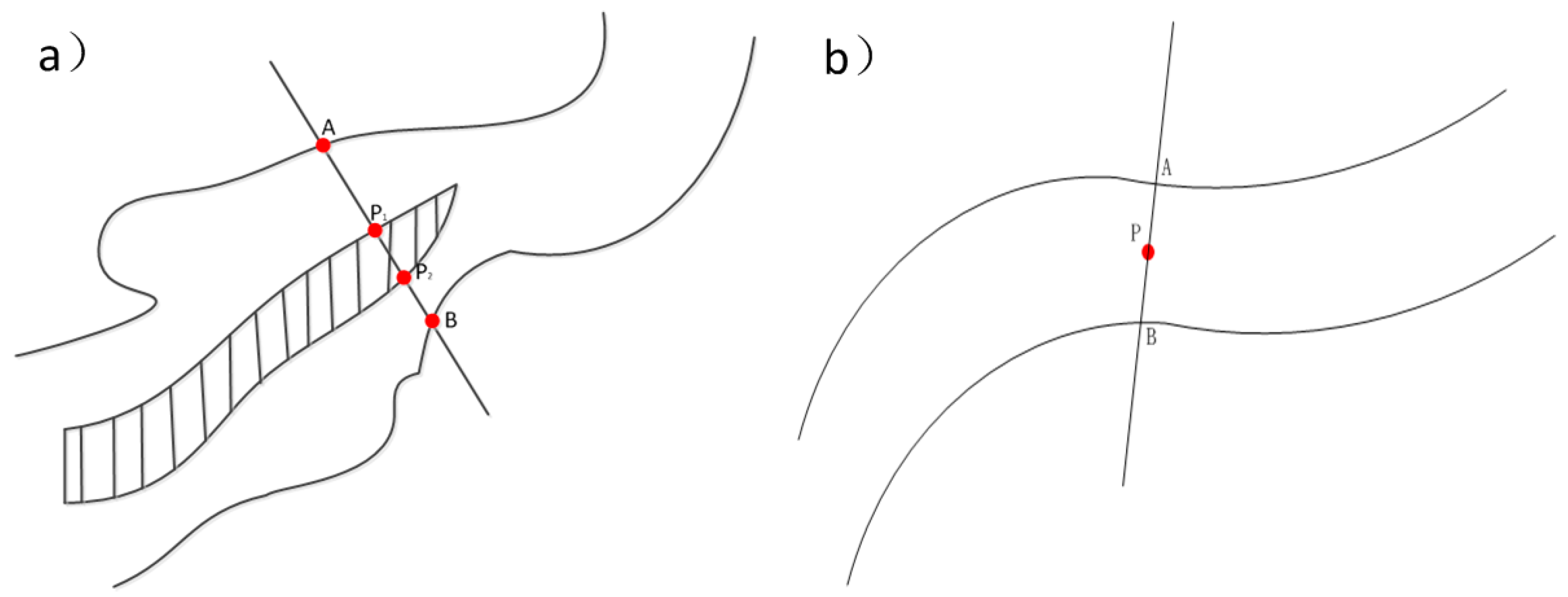

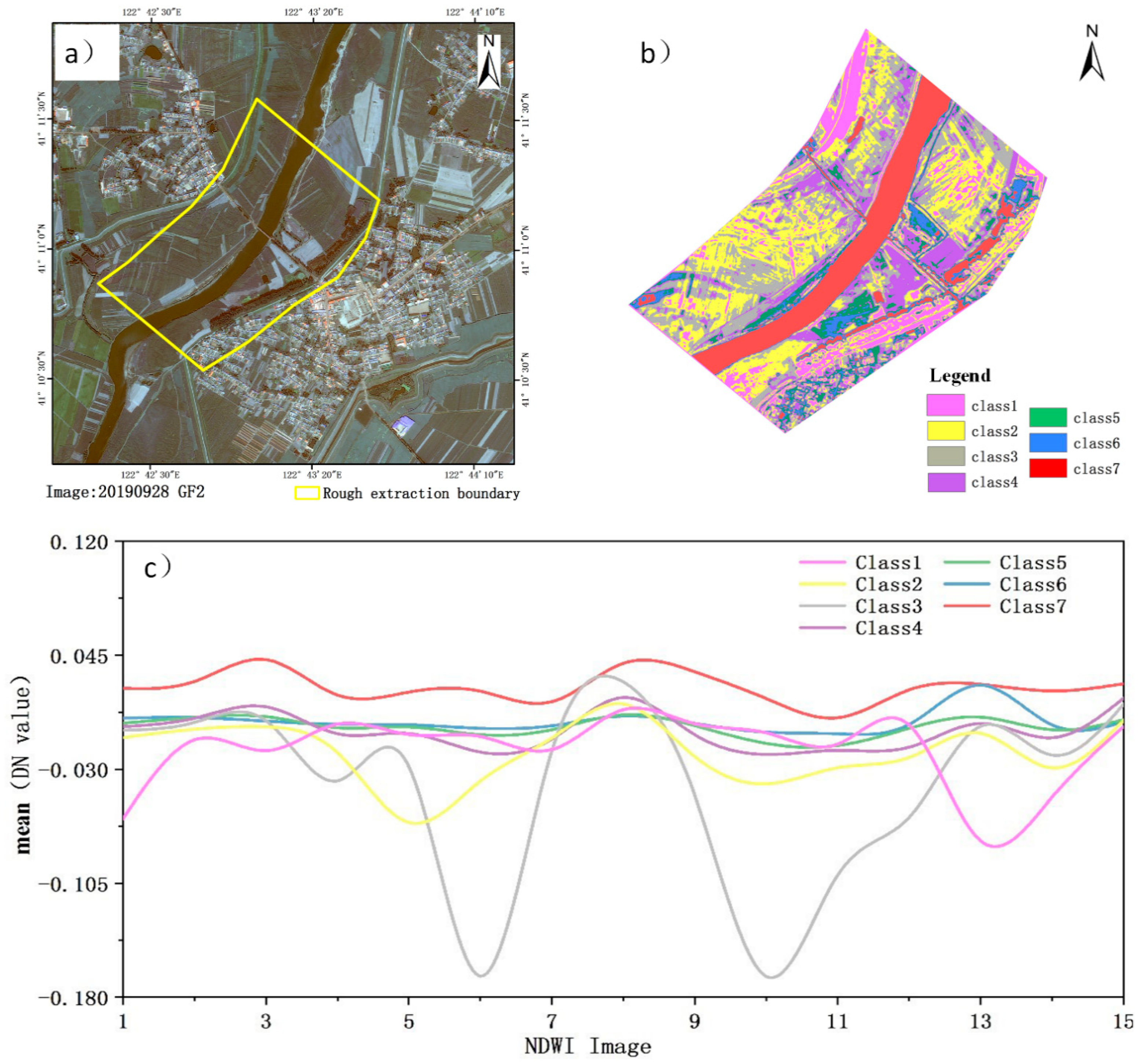

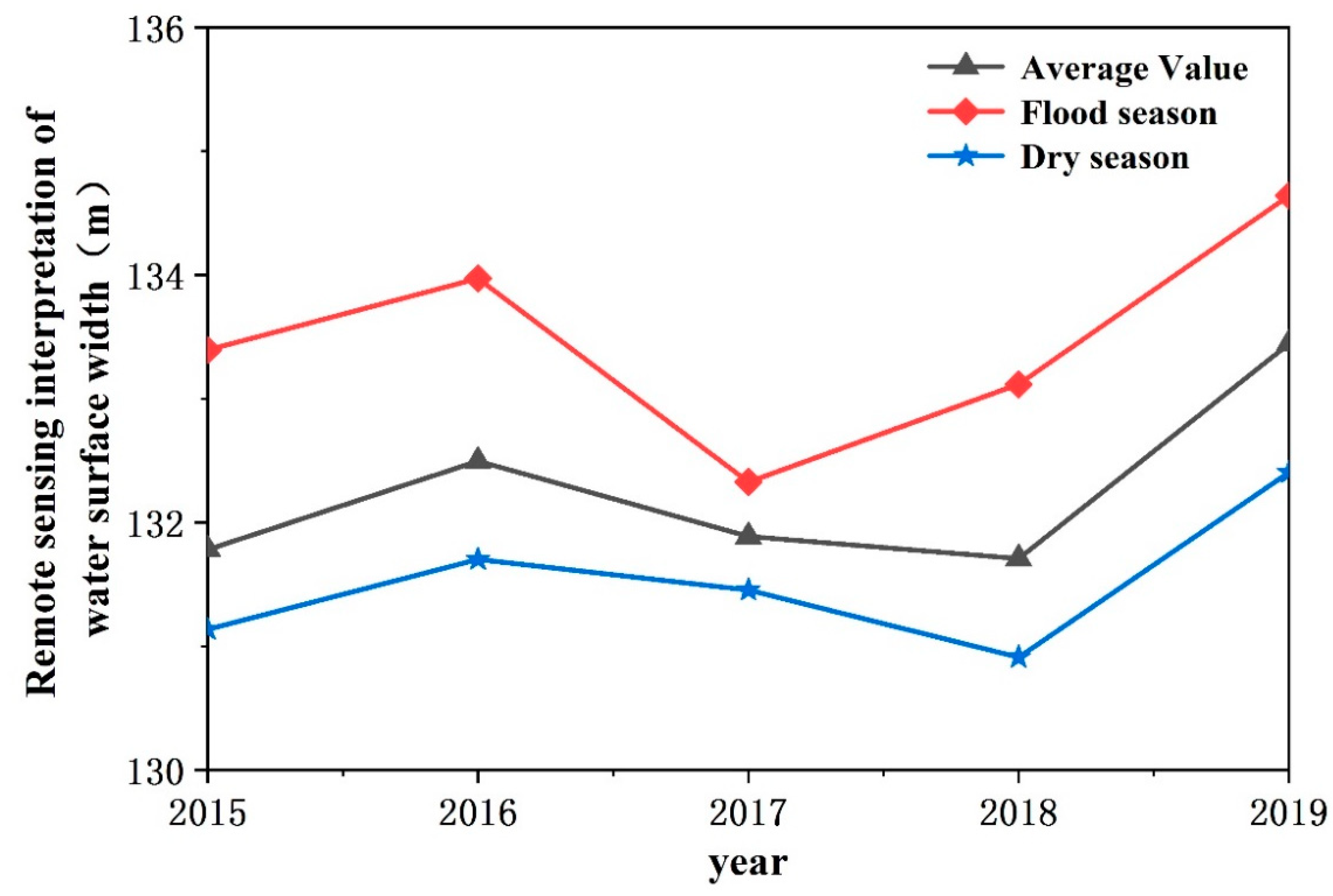

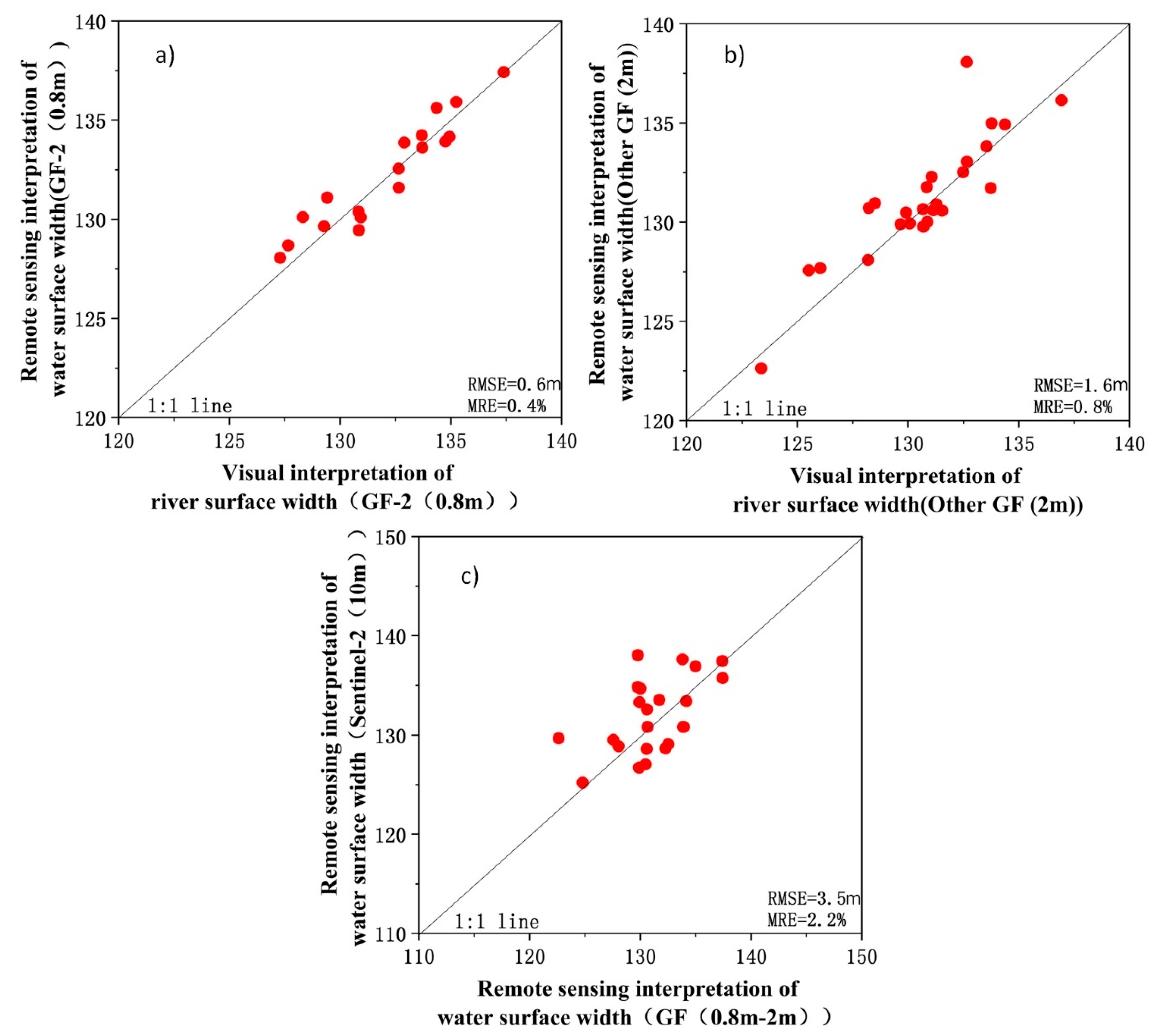


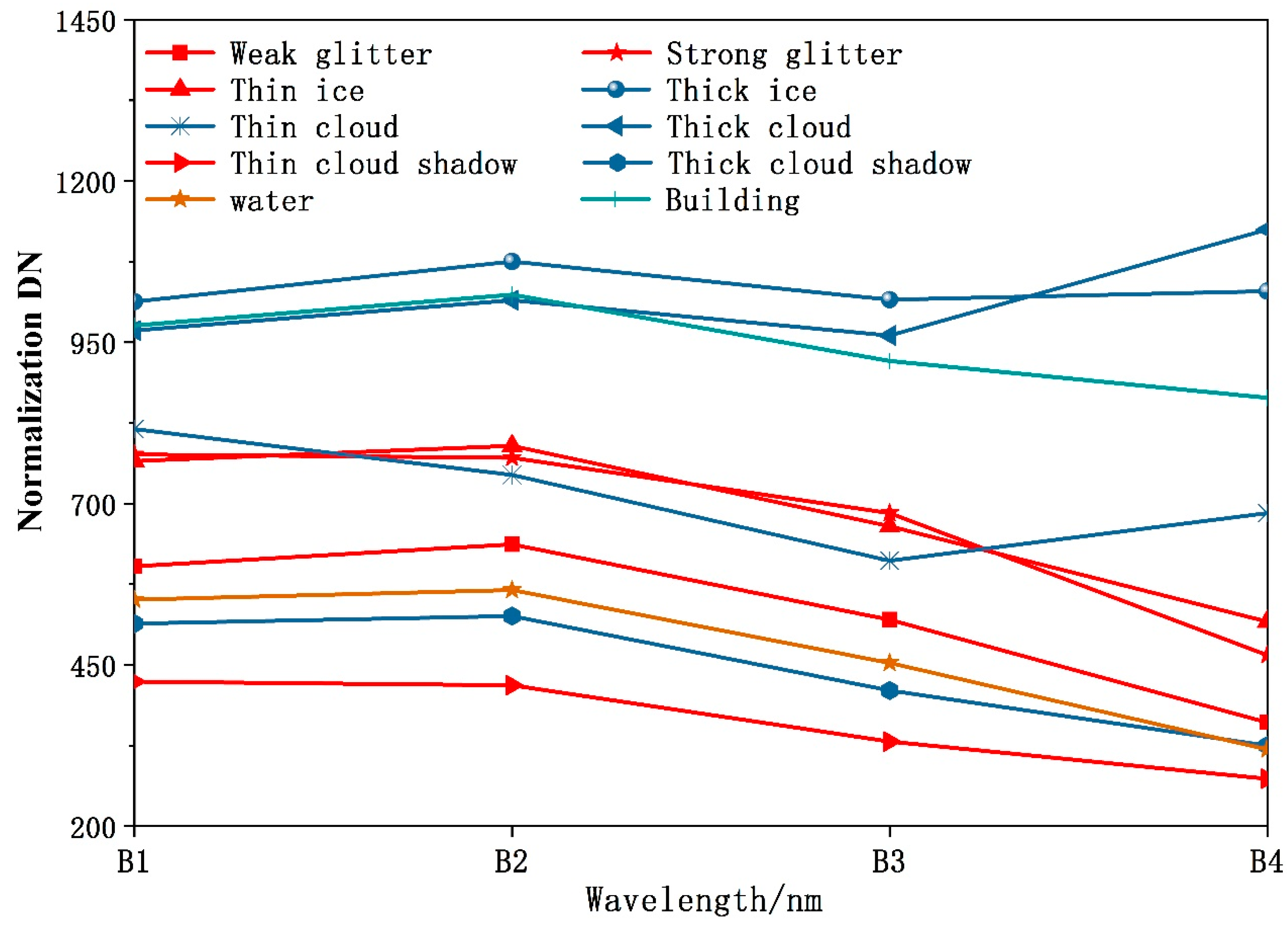
| Types | Season | 2015 Year (Scene) | 2016 Year (Scene) | 2017 Year (Scene) | 2018 Year (Scene) | 2019 Year (Scene) | Band | Band Range/μm | Resolution/m |
|---|---|---|---|---|---|---|---|---|---|
| GF series (1A, 6, 1B, 1C, 1D) | Spring | / | / | 3 | 1 | 6 | Blue | 0.45–0.52 | 8 |
| Summer | / | / | / | 2 | 1 | Green | 0.52–0.59 | 8 | |
| Autumn | / | 1 | / | 2 | 3 | Red | 0.63–0.69 | 8 | |
| Winter | 1 | 1 | 3 | 4 | 5 | NIR | 0.77–0.89 | 8 | |
| Panchromatic | 0.45–0.90 | 2 | |||||||
| GF-2 | Spring | / | 1 | 1 | Blue | 0.45–0.52 | 4 | ||
| Summer | 1 | / | / | 1 | Green | 0.52–0.59 | 4 | ||
| Autumn | 2 | 2 | / | 1 | 1 | Red | 0.63–0.69 | 4 | |
| Winter | / | 1 | NIR | 0.77–0.89 | 4 | ||||
| Panchromatic | 0.45–0.90 | 0.8 | |||||||
| Sentinel-2 | Spring | / | 6 | 6 | 18 | 21 | Blue | 0.44–0.538 | 10 |
| Summer | / | 2 | 5 | 15 | 8 | Green | 0.537–0.582 | 10 | |
| Autumn | 1 | 6 | 15 | 22 | / | Red | 0.646–0.684 | 10 | |
| Winter | 1 | 4 | 9 | 20 | 22 | NIR | 0.760–0.908 | 10 | |
| SWIR 1 | 1.539–1.682 | 20 | |||||||
| SWIR 2 | 2.078–2.32 | 20 |
| Month (Month) | 1 | 2 | 3 | 4 | 5 | 6 | 7 | 8 | 9 | 10 | 11 | 12 |
|---|---|---|---|---|---|---|---|---|---|---|---|---|
| Minimum ecological flux (m3/s) | 2.73 | 2.75 | 2.82 | 2.77 | 14.24 | 8.95 | 13.76 | 22.04 | 7.68 | 4.02 | 3.49 | 2.86 |
| Minimum ecological water level (m) | 3.1 | 3.1 | 3.1 | 3.1 | 3.3 | 3.2 | 3.3 | 3.4 | 3.2 | 3.1 | 3.1 | 3.1 |
| Minimum river surface width (m) | 84.0 | 84.0 | 84.0 | 84.0 | 101.2 | 95.8 | 101.2 | 105.6 | 95.8 | 84.0 | 84.0 | 84.0 |
| Category | Original Image (RGB: 4, 3, 2) | Normalized Water Index Image (NDWI) | Image after Automatic Threshold Segmentation (ISODATA) |
|---|---|---|---|
| Weak glitter | 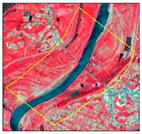 | 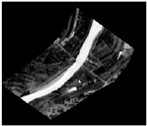 | 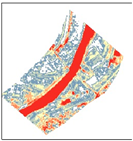 |
| Strong glitter |  | 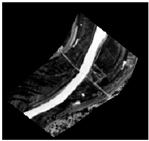 | 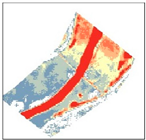 |
| Thin ice | 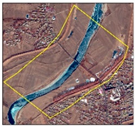 | 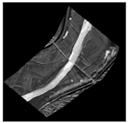 | 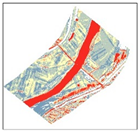 |
| Thick ice |  | 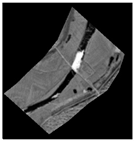 |  |
| Thin cloudThick cloud | 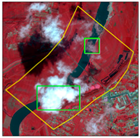 | 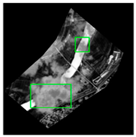 |  |
| Thin cloud shadow | 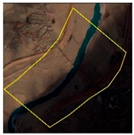 | 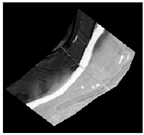 | 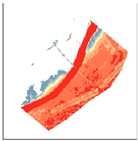 |
| Thick cloud shadow |  | 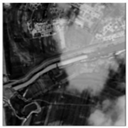 |  |
© 2020 by the authors. Licensee MDPI, Basel, Switzerland. This article is an open access article distributed under the terms and conditions of the Creative Commons Attribution (CC BY) license (http://creativecommons.org/licenses/by/4.0/).
Share and Cite
Xu, W.; Shen, Q.; Wang, X.; Wang, Q.; Yao, Y.; Huang, W.; Wang, M.; Li, J.; Zhang, F.; Chen, X. Sensing Images for Assessing the Minimum Ecological Flux by Automatically Extracting River Surface Width. Remote Sens. 2020, 12, 2899. https://doi.org/10.3390/rs12182899
Xu W, Shen Q, Wang X, Wang Q, Yao Y, Huang W, Wang M, Li J, Zhang F, Chen X. Sensing Images for Assessing the Minimum Ecological Flux by Automatically Extracting River Surface Width. Remote Sensing. 2020; 12(18):2899. https://doi.org/10.3390/rs12182899
Chicago/Turabian StyleXu, Wenting, Qian Shen, Xuelei Wang, Qian Wang, Yue Yao, Wei Huang, Mingxiu Wang, Junsheng Li, Fangfang Zhang, and Xiaoyong Chen. 2020. "Sensing Images for Assessing the Minimum Ecological Flux by Automatically Extracting River Surface Width" Remote Sensing 12, no. 18: 2899. https://doi.org/10.3390/rs12182899
APA StyleXu, W., Shen, Q., Wang, X., Wang, Q., Yao, Y., Huang, W., Wang, M., Li, J., Zhang, F., & Chen, X. (2020). Sensing Images for Assessing the Minimum Ecological Flux by Automatically Extracting River Surface Width. Remote Sensing, 12(18), 2899. https://doi.org/10.3390/rs12182899






